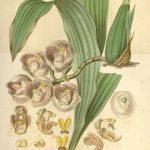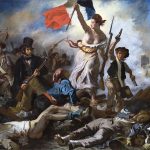Have you ever wondered about the untold stories behind famous works of art? One such captivating tale is that of Antoine Watteau and Charlotte Desmares, an artist and his muse whose romance and creativity brought the Rococo era to life. Their story is one of passion, artistry, and the delicate intertwining of their lives and work.
A Brush with Destiny: The Early Lives of Watteau and Desmares
Antoine Watteau, born in 1684 in Valenciennes, France, showed an early talent for drawing. His fascination with the delicate, the ephemeral, and the theatrical world around him shaped his unique style. By the time he moved to Paris, Watteau’s eye for detail and his ability to capture the fleeting moments of life were becoming evident.
Charlotte Desmares, on the other hand, was born into a theatrical family in 1682. Her parents were actors, and the stage was her second home. With her striking beauty and captivating presence, she quickly became a celebrated actress of the Comédie-Française. Her life on stage, filled with drama and emotion, made her an ideal muse for an artist like Watteau, whose work often mirrored the theatricality of life.
The Meeting: Art and Life Converge
The exact details of how Watteau and Desmares met remain shrouded in mystery, but it’s widely believed that their paths crossed within the vibrant artistic and theatrical circles of early 18th-century Paris. Imagine a bustling salon, filled with the chatter of artists, actors, and patrons of the arts. In one corner, Watteau sketches the lively scene, while across the room, Desmares enthralls an audience with her dramatic flair.
Their initial meeting sparked a connection that would influence both their lives and Watteau’s artistic vision. Watteau, with his reserved demeanor, found a muse in Desmares’ vivacity. Her presence breathed life into his paintings, infusing them with the same charm and allure she exuded on stage.
Watteau’s Art: A Reflection of Desmares’ Spirit
Watteau’s work is often described as capturing the essence of the Rococo movement—light, playful, and full of subtle eroticism. His paintings, with their soft pastels and fluid brushstrokes, often depict idyllic scenes of love and leisure. It’s in these works that we see Desmares’ influence most clearly.
Take, for instance, “L’Indifférent,” one of Watteau’s early masterpieces. The painting depicts a young man, elegantly dressed, exuding a sense of nonchalant charm. Many art historians believe that the character’s poise and allure were inspired by Desmares. Her theatrical grace and ability to captivate an audience found a parallel in Watteau’s characters, who seem to float effortlessly through their pastoral settings.
The Lovers’ Hideaway: The World of Fêtes Galantes
Watteau’s most famous contribution to art is undoubtedly his series of fêtes galantes—scenes of elegant outdoor gatherings where love and music reign supreme. These paintings, such as “The Embarkation for Cythera” and “The Pleasures of Love,” transport us to a world where aristocrats flirt and frolic in lush gardens.
In these dreamlike settings, one can almost see Desmares, her laughter mingling with the music, her eyes meeting Watteau’s as he sketches her form. The fêtes galantes are more than just artistic compositions; they are a reflection of the romantic and idealized world that Watteau and Desmares shared. Their love story, though private, finds expression in the public sphere of art, inviting viewers to step into their intimate world.
The Fragility of Beauty: Watteau’s Health and the Fleeting Nature of Love
While their romance flourished, Watteau’s health was in decline. He suffered from tuberculosis, a disease that would eventually claim his life at the tender age of 36. This sense of fragility permeates his work, adding a layer of poignancy to his depictions of love and joy. The knowledge of his limited time perhaps drove Watteau to capture the fleeting beauty of life with such urgency and sensitivity.
Desmares, ever the supportive muse, stood by him during these difficult times. Their relationship, though marked by the inevitability of Watteau’s illness, was a testament to the enduring power of love and art. It’s said that Watteau’s final days were spent in the company of his closest friends and Desmares, who brought comfort and inspiration until the very end.
The Legacy of a Muse: Desmares After Watteau
After Watteau’s death in 1721, Desmares continued her successful career in the theater. But her influence on Watteau’s work cemented her place in art history. Through his paintings, Desmares’ spirit lives on, immortalized in the delicate brushstrokes and soft colors that define Watteau’s style.
Desmares’ life after Watteau was one of resilience and continued passion for the arts. She remained a celebrated actress, her performances echoing the same elegance and grace that Watteau had captured on canvas. Her legacy, intertwined with Watteau’s, serves as a reminder of the profound impact a muse can have on an artist’s work.
Watteau’s Influence: The Ripple Effect on Art and Beyond
Watteau’s influence extended far beyond his lifetime, shaping the course of Rococo art and leaving an indelible mark on subsequent generations of artists. His ability to blend the real with the ideal, the ephemeral with the eternal, set a standard that many aspired to achieve.
Artists such as François Boucher and Jean-Honoré Fragonard drew inspiration from Watteau’s fêtes galantes, infusing their own works with a similar sense of lightness and romance. The themes of love, leisure, and the delicate interplay of light and color continued to resonate in the art world, a testament to Watteau’s enduring legacy.
Even in contemporary times, Watteau’s influence can be seen in various forms of art and media. His ability to capture the subtleties of human emotion and the beauty of fleeting moments continues to inspire artists, photographers, and filmmakers alike.
A Timeless Tale: The Enduring Allure of Watteau and Desmares
The story of Antoine Watteau and Charlotte Desmares is a timeless tale of love, art, and the intricate dance between muse and creator. Their relationship, though rooted in the past, continues to captivate and inspire. It’s a reminder that behind every great work of art lies a story—a story of passion, dedication, and the human desire to capture the beauty of life.
As you wander through art galleries or flip through art history books, take a moment to look beyond the canvas. Imagine the stories that breathe life into the brushstrokes, the relationships that shape the masterpieces. Watteau and Desmares invite us to explore the rich tapestry of human experience, where love and art are forever intertwined.
In the delicate hues of Watteau’s paintings, we see the reflection of Desmares’ spirit. In the elegant poses of his characters, we glimpse the grace and charm that defined her stage presence. Their story, like the art they created, is a celebration of the fleeting beauty of life and the enduring power of love.
So next time you find yourself in front of a Watteau painting, let your imagination wander. Picture the bustling salons, the whispered conversations, the stolen glances. And remember the tale of Antoine Watteau and Charlotte Desmares, the artist and his muse, whose love story continues to enchant us through the ages.
The Personal Touch: How Watteau and Desmares Resonate Today
In our fast-paced, modern world, the story of Watteau and Desmares offers a poignant reminder of the importance of art and human connection. Their relationship, though set in a different era, speaks to the universal themes of love, creativity, and the desire to leave a lasting impact on the world.
As artists and art lovers, we can draw inspiration from their story. Watteau’s dedication to his craft, despite his failing health, teaches us the value of perseverance and passion. Desmares’ role as a muse reminds us of the profound influence that others can have on our creative journey.
Whether you’re an artist seeking inspiration or a lover of art appreciating the beauty of a masterpiece, the story of Watteau and Desmares invites you to look deeper. It encourages you to find the connections between art and life, to see the stories behind the brushstrokes, and to appreciate the delicate interplay of love and creativity.
In the end, the legacy of Antoine Watteau and Charlotte Desmares is not just about the art they created, but about the love and inspiration that fueled their creativity. It’s a testament to the enduring power of human connection, and a celebration of the beauty that can emerge when two souls come together to create something extraordinary.
An Invitation to Explore: Dive Deeper into the World of Rococo Art
If this tale of love and artistry has sparked your interest, why not delve deeper into the world of Rococo art? Explore the works of Watteau, Boucher, and Fragonard, and see how the themes of love, leisure, and elegance unfold across their canvases. Visit art galleries, read biographies, and immerse yourself in the rich history of this fascinating era.
And as you do, keep the story of Watteau and Desmares in mind. Let their journey inspire your own creative endeavors, and remind you of the timeless beauty that can be found in the intersection of art and life. Whether you’re sketching a scene, composing a photograph, or simply appreciating the world around you, let the spirit of Rococo infuse your work with a touch of elegance, romance, and a celebration of the ephemeral.
In the end, the story of Antoine Watteau and Charlotte Desmares is more than just a historical anecdote. It’s a vibrant tapestry of love and creativity, woven into the fabric of art history. And it’s an invitation to all of us to find our own muse, to celebrate the beauty of life, and to create art that resonates with the timeless themes of love, passion, and the fleeting moments that make life so enchanting.




